Advanced Chord Techniques: Adding Extra Flavour to Your Playing
Cheat codes to better sounding chords
Enhance your guitar skills with these advanced chord techniques. Let’s add depth and flavour to your playing.
In this article:
Advanced Chord Techniques: Levelling Up
As we all know, crafting your initial skills on the guitar can be a long and tedious process. For some, it’s a journey of discovery, for others, it can be a chore. However, there are ways to spice things up with minimal effort.
For most of us, we get hold of a couple of chords, learn a few songs and that seems to be it. Then, you get hold of power chords, drop tunings, bends, scales, and it all starts to spiral! But, there is another way to evolve as a player.
Let’s delve into a new world of advanced chord techniques. From blues chords to major 7ths, we’ll look at how to play them and explore how they sound.
Minor 7ths
Our first look at advanced chord techniques comes in the form of the humble minor 7th. Arguably one of the easiest ways to create a new sound from a basic chord.
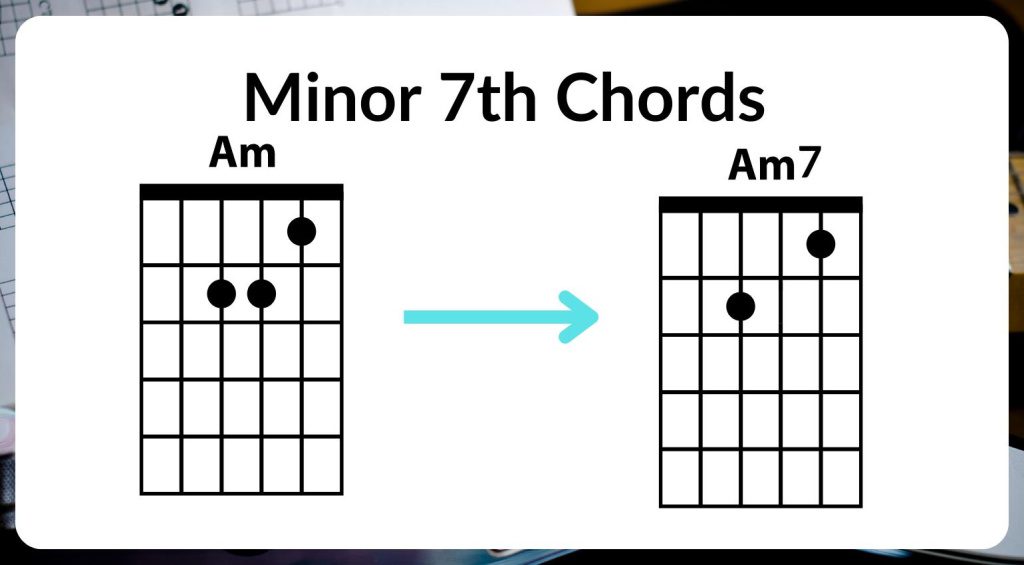
A minor 7th chord simply adds an extra interval to a usual minor chord. Thus, the root note, minor 3rd, perfect 5th and the magical minor 7th. When playing a typical open Am chord on a guitar, we can remove our 3rd finger. What does this do? This replaces that A note to a G, which is the minor 7th. You’ll hear that this version of Am is much more sophisticated.
Minor 7th Barre Chords
Moreover, we can easily modify barre chords to take them to this new minor 7th status. Whilst making an Em shape barre chord, we’d remove our 4th finger to achieve the new chord. Likewise, a minor 7th as an Am shape chord, we’d also take the 4th finger off. These chords make great additions to any progression with a minor chord.
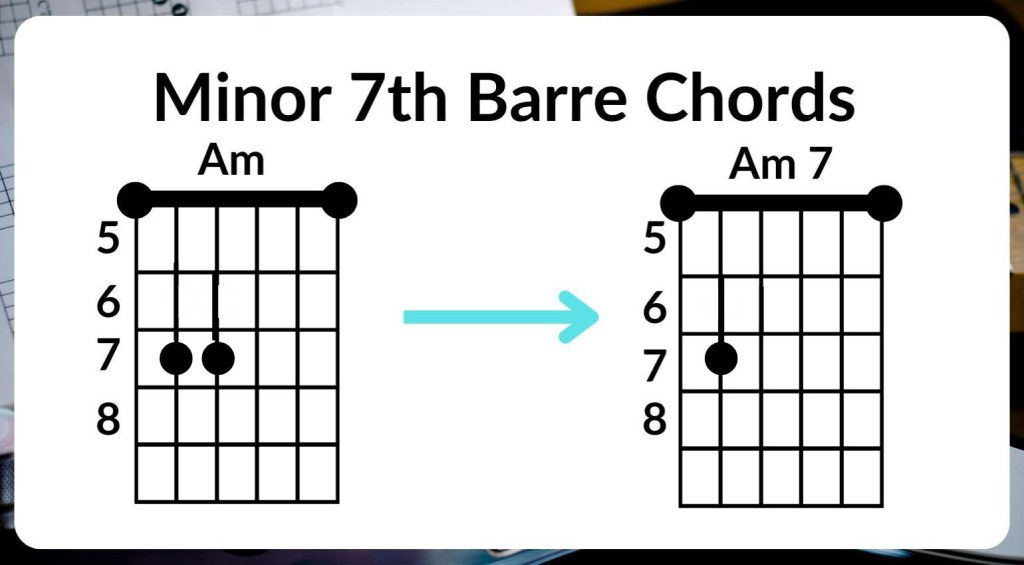
Major 7th Chords
Time to cheer up! From sad to happy, this part of our advanced chord techniques run down sees us look at major 7th chords. Not to be confused, whenever you see ‘Amaj7’, for example, we know that this is a major 7th chord because of the maj section. Minor 7th chords are presented with a lower case m, ‘Am7’.
A great example of how good major 7th chords sound is with ‘Something‘ by The Beatles. The opening chords in the verse feature, C, Cmaj7, and C7. Three variations of the same chord, but the end result is amazing.
If we were to play this as open chords, we’d go from a typical C chord, and then take off your first finger which is on the B string. By doing this, we’ve replaced a C note with the major 7th interval, B. Sounding soft and dreamy, this compliments the song wonderfully. Followed by the C7, this creates some contrast which is then resolved by the perfect 5th of F major.
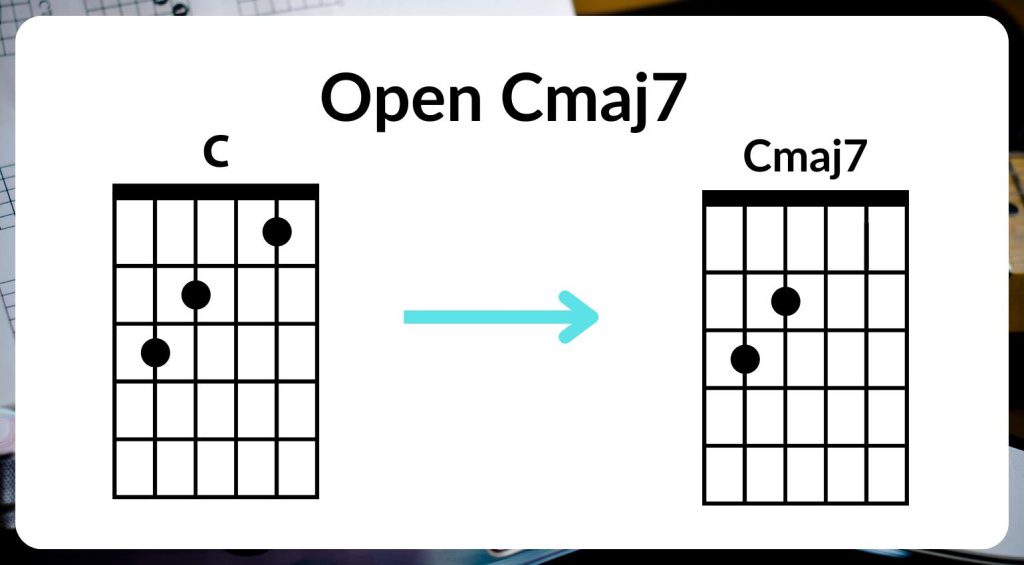
Major 7th Barre Chords
Unlike the minor 7th barre chords, major 7th barre chords are a bit harder to adjust, especially if you’re on the E string. Although, on the A string, it’s a case of moving one finger and you’re there.
Let’s take that Cmaj7 from earlier, but look at it as a barre chord. Why C again? Because the beauty of barre chords means that we can move this shape up and down the neck to achieve different chords.
From a C barre chord on the A string, we want to place the middle finger on the 2nd fret of the G string, with your first and third fingers sitting above and below on the D and B strings. All we’ve done is move the C to a B once again.
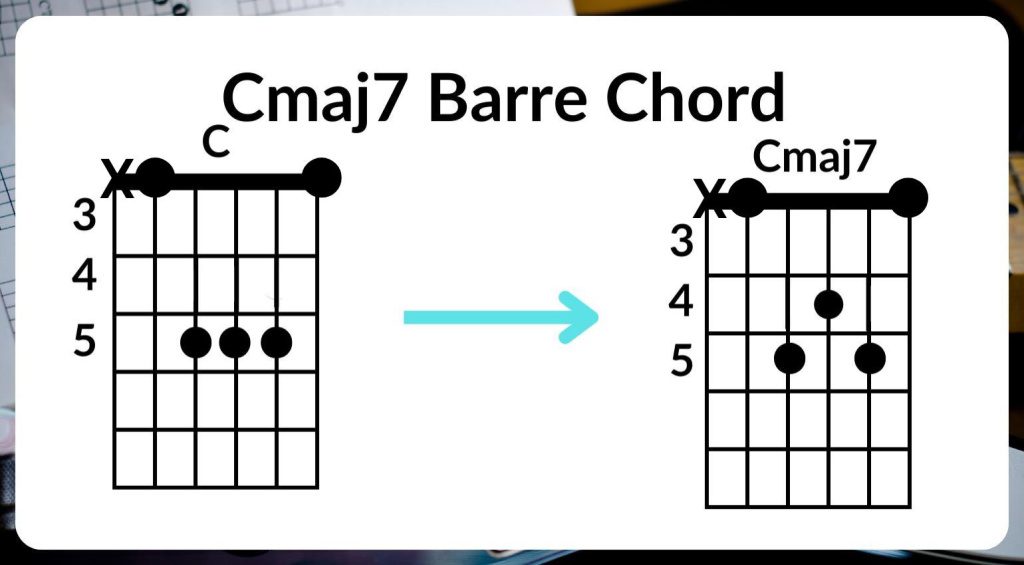
Suspended Chords
Sus chords create an open sound in the music. This advanced chord technique is a great way to invite new feelings into your compositions. An ideal opportunity to learn about sus chords on guitar is with the bridge of Summer Of 69 by Bryan Adams.
The bridge benefits from both sus2 and sus4 chords. Sus chords are where we replace the major third with a different interval. In the case of the sus2, we substitute a major 2nd, whereas the sus4 sees the addition of a perfect 4th.
In this specific song, there’s a picked arpeggio pattern from Dsus2, D, Dsus4 and then the same across Asus2, A and Asus4. Finger-wise, it’s a case of removing one, adding it back in, and then adding another. The TAB below shows what comes off and on.
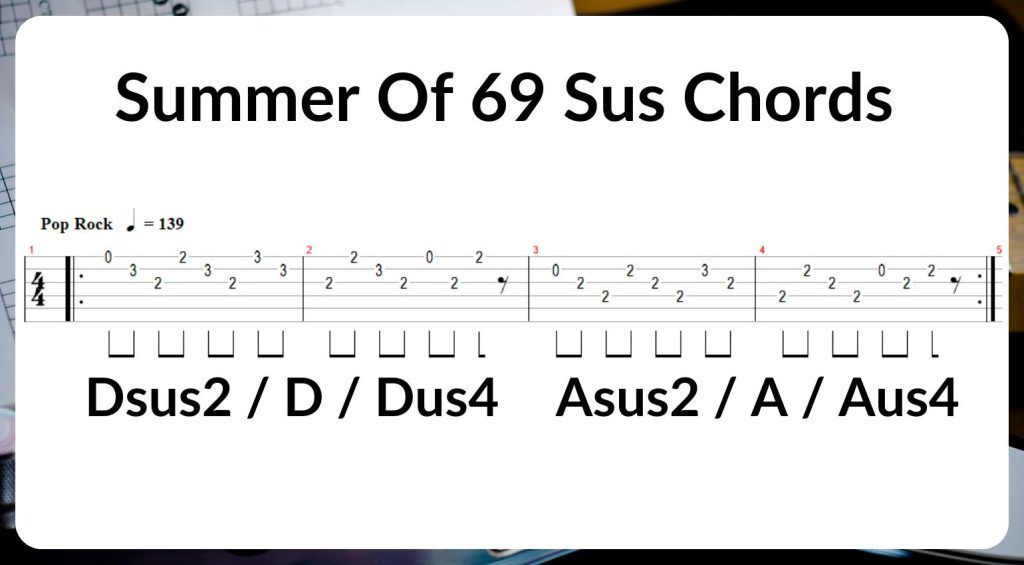
Blues Chords
For our final look at some advanced chord techniques, we’re going to get more acquainted with some blues music. Ordinarily, a basic blues progression works through a I, IV, V progression. But, we can add a little bit of extra flare to this.
Chuck Berry’s Johnny B. Goode is your archetypal blues progression, in the key of Bb on this occasion. We can add what we call a 9th chord to the V chord in this song. By doing this, we create a bluesy clash which can only be resolved by the I chord, Bb. We’ve added the 9th degree of the scale, played here on the B string.
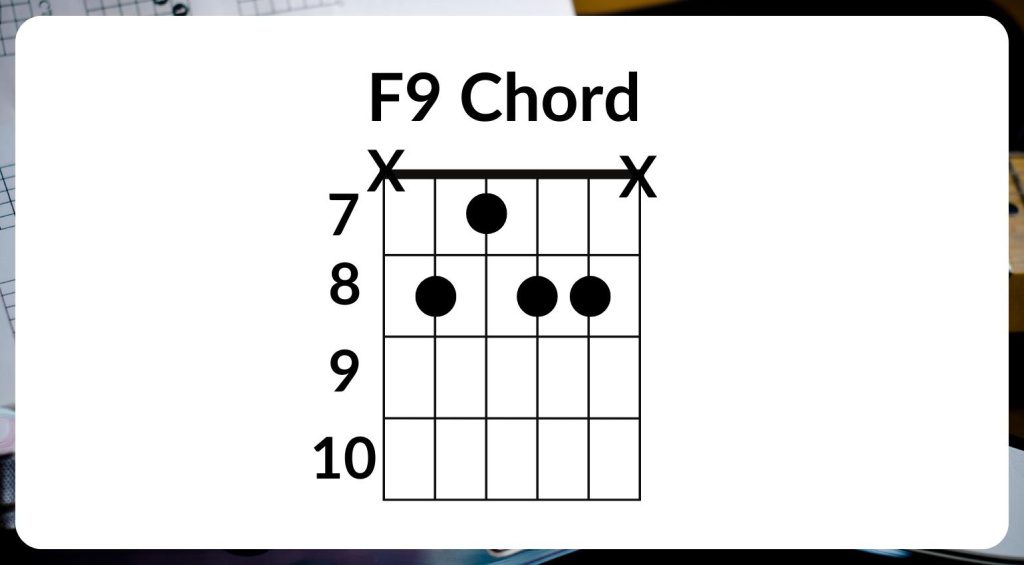
Videos:
Further Information:
4 responses to “Advanced Chord Techniques: Adding Extra Flavour to Your Playing”


 4,8 / 5,0 |
4,8 / 5,0 | 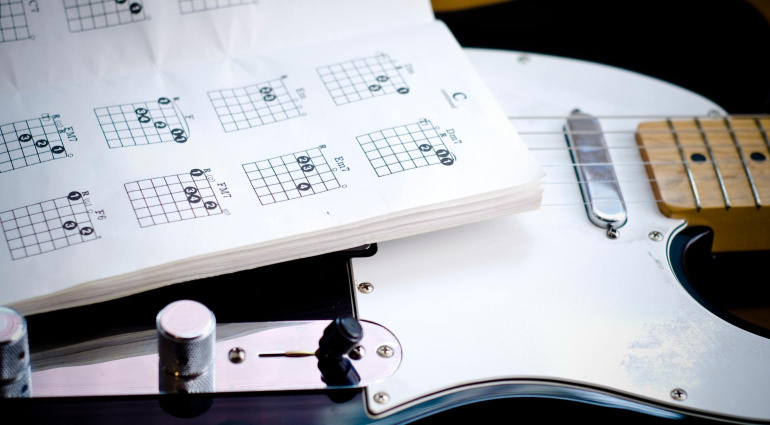

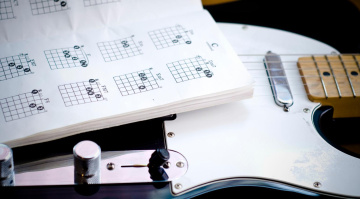





powerful stuff. thankyou and God bless you for the info.
Hello Pieter, I’m glad that you’ve found these tips useful!
Both Am7 and Cmaj7 barre chord pictures are wrong. Try playing them yourself.
Hi Hans, they sound pretty good to me… Have you checked that you don’t have any fingers blocking any strings?